Beigushan HillBeigu Mountain
Beigu Mountain, one of the three scenic spots in Zhenjiang, overlooks Beigu, pillows the river, rocky walls, and the mountain is dangerous, so it is named Beigu Mountain. In the Three Kingdoms period, the story of "Liu Bei's Recruitment in Manlu Temple" took place in Beigu Mountain. Beigu Mountain, known for its steepness, is famous for the stories of the Three Kingdoms for thousands of years. The pavilions and pavilions on the hills and the mountain rocks are all related to the historical legends of Sun Liu's marriage in the Three Kingdoms Period, and have become the place that tourists yearn for visiting the relics of the Three Kingdoms. Manlu Temple stands on top of the peak, forming the characteristics of "Temple Guanshan". Legend has it that it was built in the first year of Ganlu (265 A.D.) in Dongwu of the Three Kingdoms, but it has been built many times since then. The Temple includes the hall, Laojun Hall, Guanyin Hall, Jiangshengge and so on. Although it is small in scale, its fame is not small. Throughout the ages, visitors to Zhenjiang have enjoyed visiting the sites where Liu Bei recruited relatives.
Beigu Mountain is located in Zhenjiang, Jiangsu Province. It is named Beigu because of the dangerous situation of the Yangtze River in the north. It is 55.2 meters high and about 200 meters long. The cliff is steep and the situation is dangerous. Emperor Liang Wudi of the Southern Dynasty once wrote "the first river and mountain in the world" to praise its shape and victory. Ganlu Temple, which was built in the days of Ganlu in the Eastern Wu Dynasty, has many legends and relics about the Wu Kingdom during the Three Kingdoms Period. So far, visitors can not help but look for the relevant scenic spots and legends with the story of Liu Bei's family recruitment as a clue. Beigushan, Jinshan and Jiaoshan become the corners of the situation, three mountains stand side by side, in the control of Chu negative Wu, Beigushan is even more magnificent and dangerous. The Ming Dynasty County guards cut the front peak and the middle peak in order to resist the Japanese guard city.
Beigu Mountain is composed of three parts: the front peak, the middle peak and the back peak. The main peak is the back peak, which is the best place for scenery. Qianfeng, formerly the site of the ancient palace of Dongwu, has been established as the martyrs'cemetery of Zhenjiang; the former meteorological building on the mid-peak has been changed into a Chinese painting museum; the latter is the main peak of Beigu Mountain, bordering the Yangtze River (Yangtze River) in the north, with three cliffs on three sides and steep terrain. There are trees everywhere on the mountain, and many scenic spots and historic sites are on it. It is known as "the first river and mountain in the world". Back peak is the main peak of Beigu Mountain, facing the Yangtze River, resting on the water, cliffs such as cut, is the best place for scenery.
Mountaineering from the south foot of Beigu Mountain, passing the meteorological station, and traveling northward along the ridge to Qinghui Pavilion. There is an iron tower in the east of the pavilion, which was built by Li Deyu, the Tang Wei Gong, in the first year of Baoli (825), so it is also known as the Wei Gong Pagoda. The original stone pagoda was destroyed later. In the first year of Yuanfeng in Northern Song Dynasty (1078), it was rebuilt into a nine-grade iron tower with plane and octagonal shape. In the Ming Dynasty, it was revised to seven grades, about 13 meters high. After the tsunami, lightning, war and other disasters, until 1949, only two storeys of tower. Now it has been trimmed into four layers, about 8 meters high. The base and the first and second layers of the tower are original materials of the Song Dynasty. The third and fourth layers are five or six layers of the original tower, which were cast in the Ming Dynasty. Existing tower base and body have exquisite patterns, unique shape, vivid.
Lingyun Pavilion in the east of the multi-view building, also known as the Jiang Pavilion, is said to be Mrs. Liu Sun Shangxiang who, after hearing the news of Liu Bei's death, offered sacrifices here and then threw herself into the river. When Xin Qiji, a patriotic poet of the Southern Song Dynasty, climbed the pavilion, he touched the scenery, expressed his feelings and wrote a famous article: "Where to look at Shenzhou, full of scenery of Beigu Building." Throughout the ages, there have been many ups and downs. The Yangtze River is not rolling. Thousands of young people, sitting in the southeast war never ceased. Who is the enemy of the heroes in the world, Cao Liu? Birth of a son should be like Sun Zhongmou.
Phoenix pond
Legend has it that Zhu Yuanzhang, the ancestor of Ming Dynasty, once called Confucian scholars in Linchi. In ancient times, he passed through the pavilion in Ganlu Port, which was called Phoenix Pavilion.
Sword Testing Stone
On the right side of the Phoenix Pool, there is a huge stone which is straight and divided into two parts. This is the test stone, also known as the hatred stone. The high one is about 1.5 meters, the short one is halved. There are cracks in the middle. It is flat and cut like a chisel. The words "test stone" on the stone are clearly distinguishable.
There is also a story about Sun Liu's marriage, which is believed to be a fake one. One day, when Sun Quan and Liu Bei were traveling with each other in Phoenix Pool, Liu Bei saw a huge stone beside the pool, that is, he pulled down his follower's sword and prayed silently to the heavens: "If I can return to Jingzhou smoothly and become the hegemony business, the stone under the sword will crack; if I die here, I can't cut the stone." Hands rise and fall, sparks splash and boulders crack at the sound. When Sun Quan saw this, he asked Liu Bei, "Why do you hate this stone?" Liu Bei falsely answered, "I am nearly fifty years old. I can't clean up thieves for my country. I am very angry. It is my life's good fortune that Mongol Emperor Tai recruited me as my son-in-law. I asked the divination to the heavens. If I could break Cao Xinghan, I would split the stone, and now it's as I wish. Then Sun Quan thought to himself, "Did Liu Bei use this to deceive me?" He also pulled out his sword and said to Liu Bei, "I also come to ask God's will. If Cao Cao can be broken, he will also split the stone." A secret prayer: "If we can take Jingzhou again and prosper Dongwu, the stone will split into two halves." Then he swings his sword and splits another stone. They secretly delighted themselves, so they left two fencing stones.
In fact, the formation of feldspar originated from geological evolution: in the Cretaceous period, about 100 million years ago, volcanic rocks were formed because of volcanic eruption and magma eruption on the surface. Because of their hard texture, multi-fissures and weathering denudation, these rocks are not what steel knives and swords can split.
Iron tower
In the southeast of Beigu Mountain, beside Qinghui Pavilion, there is a four-storey iron tower. The Iron Tower, also known as the Weigong Tower, is an important cultural relic of Beigu Mountain. It is one of the six remaining iron towers in China and the only one in Jiangsu Province. It is a provincial cultural relics protection unit.
The tower was built in the first year of the Tang Dynasty (825). It was built by Li Deyu, the assassin of Runzhou in the Tang Dynasty, for the benefit of Emperor Zimu (Tang Muzong). After repeated destruction and construction, the existing tower is four layers, one or two layers are Song Dynasty products, three or four layers are cast by Ming Dynasty. Existing tower base (lotus pedestal) and tower body have exquisite patterns, such as cloud and water pattern, lotus petal twin sparrows, dragon game beads, Buddha statues, etc., which are exquisite in shape and vivid. The iron tower adds a solemn and magnificent color to Beigu Mountain, which shows the superb iron smelting skills of the ancient working people in China.
Abe Zhong's Malu Poetry Stele
To the west of the tower, there is a poetry stele of "Looking at the Moon and Hometown". The poems on the stele are written by Japanese envoy Abe Zhongma Lv (Han name Chaoheng). Born in 698 and died in 770, he was smart and eager to learn since childhood. In 717, he was selected as a student sent to Tang Dynasty. The following year, under the leadership of the 9th Japanese envoy to Tang Dynasty, Dogibi, he set out from Osaka. Chao Heng studied in Taixue of Tang Dynasty in Chang'an, China, and won the bachelor's exam. He had a deep friendship with Wang Wei and Li Bai, the famous poets of Tang Dynasty. Tang Xuanzong highly valued his talent and appointed him successively as secretary of the Tang Dynasty to guard Caiqing and Zhennan Dufu. In 753, Chao Heng was appointed to be an envoy of the Tang Dynasty. He crossed Dongdu with Master Jianzhen and Japanese envoys. On the way, he berthed on the Yangtze River. The moonlight was bright at night and Chao Heng was full of thoughts. When he thought of not returning to his hometown for 36 years, he wrote the famous five-character poem "Looking at the Moon and Looking at the Country", in which he wrote: "Looking up to the East Sky, looking at the Innocent Side." On the top of Sanli Mountain, I want to have a full moon.
Chao Xing's Sinology attainments are very deep. His poems "Looking at the Moon and Hometown" have been included in "Poems of the Tang Dynasty" and are widely known in Japan. The monument was built at the end of 1990. The Japanese inscription on the stele was written by Yoshiyun Tanaka, president of the Japanese Academy of Calligraphy, and the Chinese inscription was written by Shen Peng, acting chairman of the Chinese Calligrapher Association. Zhao Puchu, a famous calligrapher, wrote the inscription on the stele.
The title of "Nanxu Jingyu" and the stone carvings of "the first river and mountain in the world"
Not far from the west of the stele "Looking at the Moon and Hometown", there is a circular arch with the title "Nanxu Jingyu". Legend has it that in the late Western Jin Dynasty, the North was chaotic and the East Jin Dynasty was in the south of the Yangtze River. At that time, people from the North went south in succession, and Xuzhou was set up in the Eastern Jin Dynasty. The Prefecture was governed in Jingkou (now Zhenjiang). By the time of Liu Song Dynasty, it was officially named Nanxuzhou, after which Nanxu had always been the alias of Zhenjiang. On the corridor wall after that, a rectangular stone engraved with powerful "the world's first river and mountain" six big words, extraordinary boldness. Legend has it that Liu Bei came to Dongwu to invite relatives and Sun Quan Banquet accompanied Liu Bei to enjoy the scenery of the river. Liu Bei saw Beigu Mountain standing on the riverside and going east of the river. He could not help but praise it: "Beigu Mountain is really the first river in the world!" Later in the Northern and Southern Dynasties, when Emperor Wudi Liang climbed Beigu Mountain, he saw the magnificent scenery of Beigu Mountain. He wrote six big words of "the first river and mountain in a day" with great enthusiasm, and left them on the mountain. Unfortunately, there was no way to find them. In the Southern Song Dynasty, Wu Zheng, a famous calligrapher and the history of Runzhou (Zhenjiang), rewrote these six characters. During the reign of Emperor Kangxi in Qing Dynasty, Cheng Kangzhuang copied Leshi by Zhenjiang Prefecture. Since then, Beigu Mountain has been rightly known as "the first river and mountain in the world".
Ancient mandew Temple
There is Manlu Temple on the top of Beigu Mountain. Ganlu Temple was built in the period of Ganlu (265-266) in Eastern Wu Dynasty, so it is called "Ganlu Temple". The temple was written by Zhang Fei. In order to commemorate Zhenjiang as the capital of East Wu and make people never forget the historical facts of the tripartite establishment of the Three Kingdoms, he moved the historical relics of Liu-Sun Alliance, the legend and relics of Sun-Liu marriage to the mountains, and Beigu Mountain has become a famous historical attraction in China since then. Up to now, the traditional opera "Ganlu Temple" (also known as "Dragon and Phoenix Chengxiang") has gone deep into the folk. Therefore, all tourists who come to Zhenjiang should visit here, climb Beigu Mountain, visit Manlu Temple, see the hall of Liu Bei's marriage, and associate with the past of Sun Shangxiang's marriage, which is interesting.
Ancient Ganlu Temple is a large-scale temple with more than 500 monks in Song Dynasty. The Ming and Qing dynasties were in their heyday. There were more than 200 questions about temples, palaces and monk houses. Emperors Kangxi and Qianlong built palaces here. Ganlu Temple is also one of the famous ancient temples in ancient China. Its architectural characteristics are different from those of Jinshan and Jiaoshan. It adopts the method of "Zhenshan by Temple". Therefore, it has the tendency of flying over the sky and forms the characteristic of "Winning the Champion Mountain".
Sacrifice Pavilion
Through the Ganlu Temple, to the west, there is a stone pillar square pavilion, which is called the Beigu Pavilion in ancient times. There are also Lingyun Pavilion, Moyun Pavilion, Linjiang Pavilion, the first Pavilion in Jiangshan and the first Pavilion in the world.
Lingyun Pavilion and Moyun Pavilion are named because they are located at the highest point of Beigu Mountain and are connected with the blue sky. Because this pavilion is built on the top of the stone wall of the face river in Beigu Mountain, it is also called Linjiang Pavilion. Legend has it that after Sun Liu's marriage in the Three Kingdoms, his wife Sun went to Jingzhou with Liu Bei, and was deceived by Sun Quan to return and forcibly retain Jiangdong. After the collapse of the alliance between Sun and Liu, the battle of Yi Ling and the defeat of Liu Bei, his wife, Sun Shi, heard the falsehood that Liu Bei died of illness in Baidi City, was so sad that she climbed up the pavilion and set up a pavilion to throw herself into the Yangtze River after visiting Xiyao. The "first Pavilion in Jiangshan" is said to have been inscribed by Kang Youwei after he saw the scenic spot of Beigu Mountain in the pavilion at Star Night.
This pavilion was built in Chongzhen in the late Ming Dynasty, with two pairs of stone pillars inscribed with sills: "wash the running water with hospitality, shake the chest and create stratum clouds"; "This body does not perceive flying birds, but can also fish giant soles with its hands." There are walls and corridors outside the pavilion, with stone tables and benches inside. Under the pavilion, the stone wall hangs over the river, and the pavilion stands out. The water and mountains around the pavilion have a full view. The moonlight scenery is more charming. Xin Qiji, a patriotic poet of the Southern Song Dynasty, climbed the Beigu Pavilion. He saw the Yangtze River rolling eastward and improvised to express his feelings. He used the past to satirize the present, condemned the fatuousness of the rulers of the Southern Song Dynasty, and did not attempt to recover the lost land in the Central Plains. He wrote the following books: Nanxiangzi Dengjingkou Beigu Pavilion and Yongyue Yuejingkou Beigu Pavilion. It is a masterpiece that has been handed down for thousands of years.
Multi view building
Behind the Ganlu Monastery, there is a painted-beam eaves Pavilion called "Multi-view Building". The ancient name "Beigu Building" is also known as "Chunqiu Building", "Xiangshi Building" and "Dressing Building". It is one of the three famous buildings along the Yangtze River in ancient times. It is as famous as the Yueyang Tower by the Dongting Lake and the Yellow Crane Tower in Wuhan. It is called "the husband-in-law building" and "the dressing building", which is related to the legend of Liu Bei's inviting relatives from Dongwu. It is said that after Liu Bei borrowed Jingzhou from Dongwu, he had no intention of returning it, so Zhou Yu decided on a beauty scheme to take Liu Bei's chance to cross the river and detain him as a hostage in order to seize Jingzhou. However, this conspiracy was discovered by the resourceful Zhuge Liang, who sent General Zhao Zilong to accompany Liu Bei across the river to the Ganlu Temple in Gushan, Zhenjiang, to recruit relatives, and gave Qiao a golden trick to encourage his mother-in-law, Wu Guoda, to come to the multi-view building of the Ganlu Temple to meet his son-in-law. When Wu Guotai saw Liu Bei's "big ears, ape arms crossing knees" and "a picture of the Son of Heaven", she was very pleased and agreed to marry her daughter Sun Shangxiang to Liu Bei immediately. Sun Shangxiang, the principal of the county, arranged a cave upstairs, dressed up and guarded Liu Bei with knives and guns. Liu Bei was frightened at the sight, Sun Shangxiang saw this scene, had to order the withdrawal of knives and guns, Liu Bei dared to go upstairs into the cave. Later, people called the multi-view building "matchmaking building" or "dressing building". In this way, Sun Liu's marriage became a fake reality. This is the story of Zhou Lang's ingenious plan to make peace with the world, to compensate his wife and to fold his troops.
In fact, Liu Bei recruited relatives to meet Sun Shangxiang in DuoJinglou, which was added by later generations according to the story of The Romance of the Three Kingdoms. The multi-view building was founded in the Tang Dynasty. Its name was derived from Li Deyu's "Linjiang Pavilion" poem "Multi-view hanging window essence". The multi-view building is a two-storey building with four corridors and a view on all sides. Climbing the multi-view building and looking over the fence, the scenery is beautiful and the scenery is beautiful. It really feels like flying in the sky. The torrential river flows in the east, and the green Jiaoshan is dimly visible in the blue waves of thousands of hectares; the mountains overlap in the West and merge into the blue sky; the Jinshan nearby is more and more beautiful because of its clear background; the Wenfeng Pagoda of Yangzhou on the other side of the river is vaguely visible. When Marshal Chen Yi came to the multi-view building, he once said with emotion, "Don't look at the paintings, here is the picture scroll of the Yangtze River!"
Ruthless stone
Down the hill to the west, there are blocks of Fuyang-like, similar in size to real sheep, hornless stones, left abdomen engraved with the word "ruthless stone", ruthless stone is also known as "Shiyang". According to legend, Sun Quan once rode on the ruthless stone back and discussed with Liu Bei to break Cao's plan, and decided on a clever plan for the battle of Chibi. From Lulu Lane (today's Luzhu Lane) of Zhenjiang City, a hornless Fu sheep was carved by mason.
Horse riding stream
The stone wall under the rugged hill is engraved with three big characters of "Roaming Horse Jian". Located on the cliff behind the Beigu Mountain peak, there are two cliffs on both sides. Zhongtong is a first-line trail. The terrain is very steep. It is also known as "Walking Horse Jian" and "Running Horse Slope".
According to legend, this is where Sun Quan and Liu Bei compete in horse racing. It is said that one day Liu Bei and Sun Quan drank in the Ganlu Temple, only to see the wind of the river, white waves surging, there is a boat on the crest, boatmen can sail freely, such as on the flat ground, Liu Bei can not help but admire: "Southerners are good at boating, northerners are good at horseback riding, there is faith." Sun Quan listened to this saying and thought to himself: "Liu Bei mocked that I could not ride a horse?" He ordered him to lead the horse around, fly on the horse, gallop down the mountain, and whip back to the ridge. He said to Liu Bei, "Can't Southerners really ride a horse?" Liu Bei listened to the plain clothes on horse, rushed down the hill, and back up the hill. The two men parked their horses on the hillside, whipping and laughing. Later generations called it "the creeping horse jian", "the creeping horse jian" and "the standing horse slope". On its cliff and stone wall, there is the word "Lema" inscribed in the Ming Dynasty.
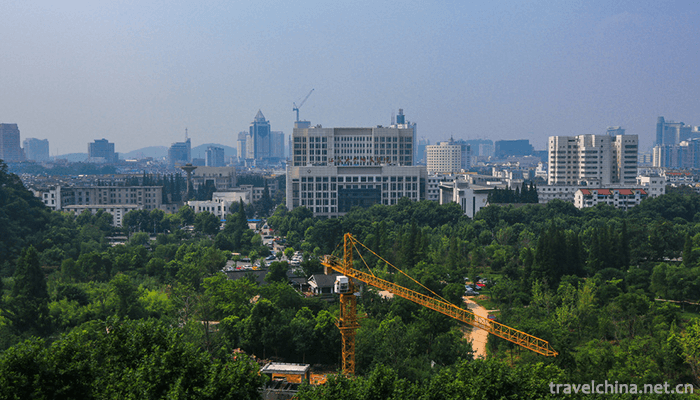
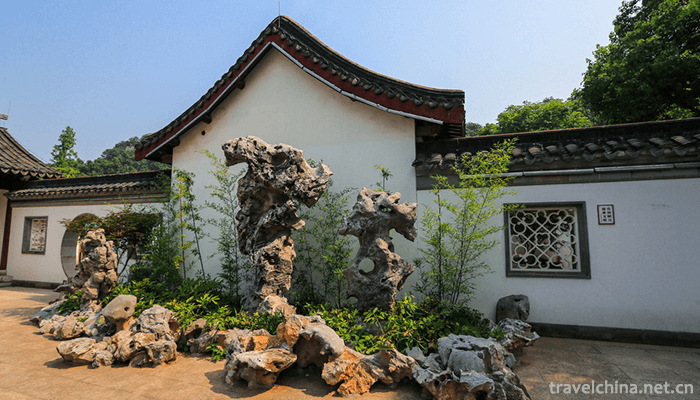
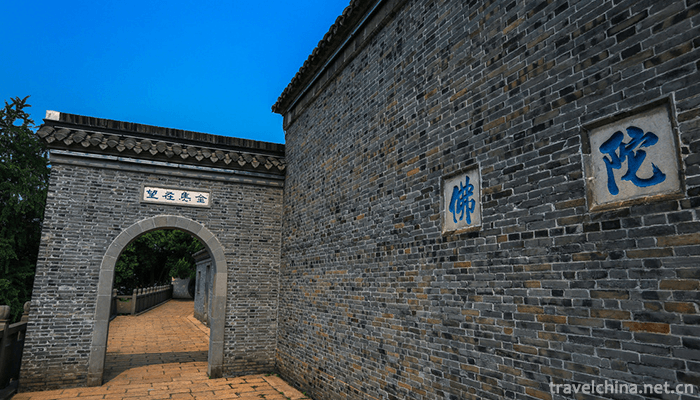
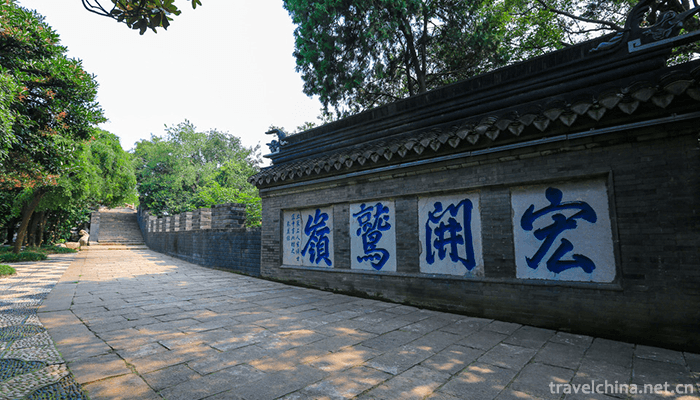
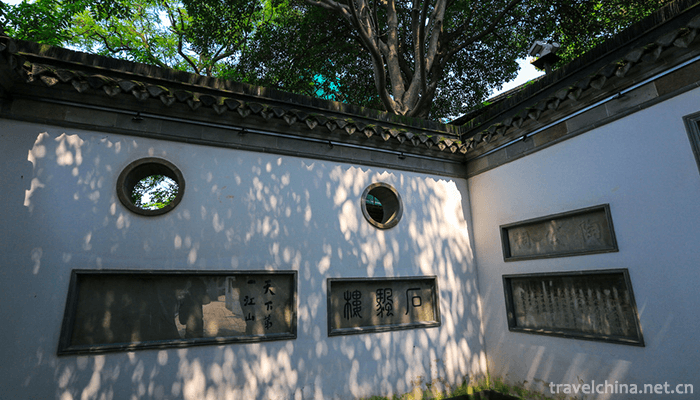
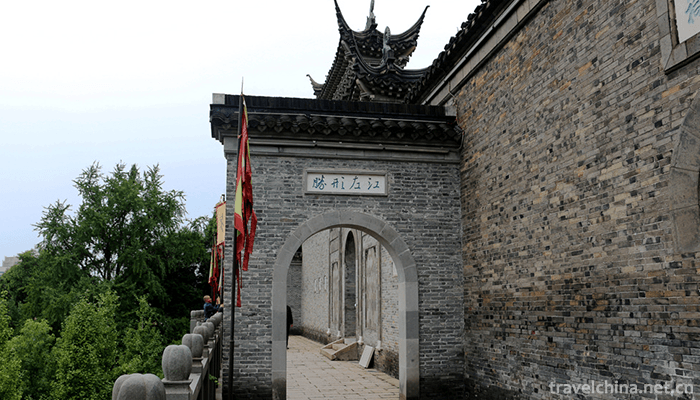
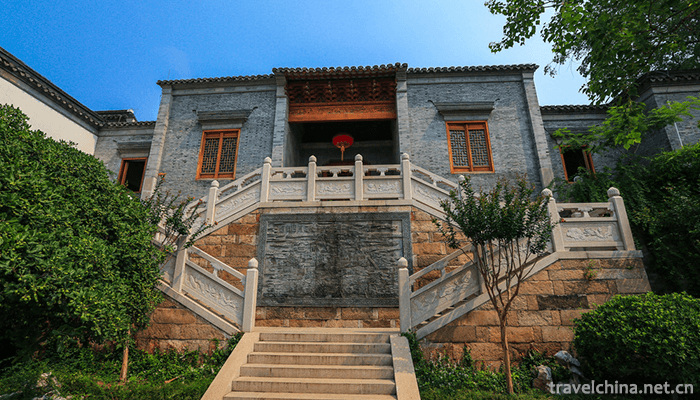
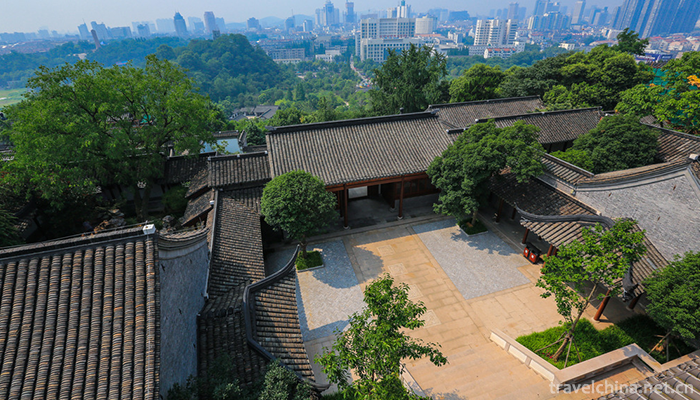


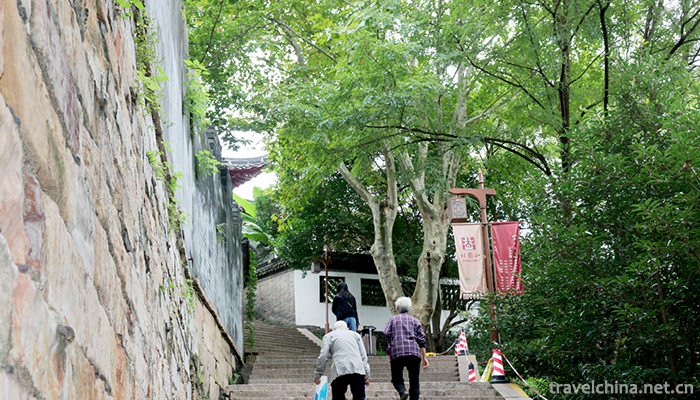
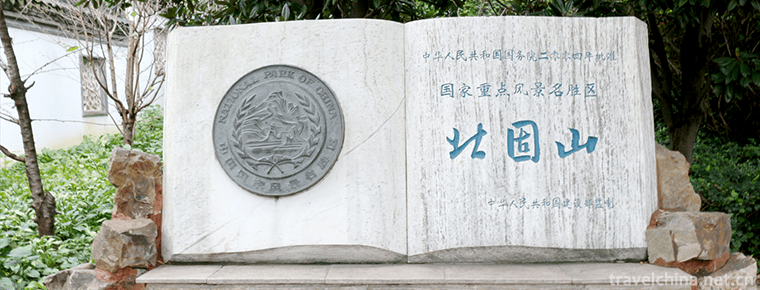
-
1.Genghis khan mausoleum tourist area
Genghis khan mausoleum tourist area, also known as Chengling Tourist Area, commonly known as the Eastern Union Scenic Area (not Genghis Khanling)
Time 2018-12-01 -
2.Sankong Tourist Area in the Old City of the Ming Dynasty
Qufuming Old City Tourist Area in Jining: World Cultural Heritage, one of the three holy cities in the world, national AAAAA-level tourist attractions, National Scenic spots
Time 2019-02-07 -
3.Cloth tiger
Cloth tiger is a kind of traditional handicraft which has been widely spread among Chinese people in ancient times. It is also a good toy for children, indoor decoration
Time 2019-04-04 -
4.Di Shu boxing
Gejiquan is one of the rare traditional types of boxing in southern China, also known as "Gejiu Dog Method", "Dilong Quan" or "Dili Quan". It is commonly known as "D
Time 2019-04-26 -
5.Song and dance duet
Errentai is commonly known as Dual Items, two classes. Originated in Shanxi and growing up in Inner Mongolia, it is a traditional opera popular in the central and Western Inner Mongolia Autonomous Reg
Time 2019-04-29 -
6.Huizhou folk songs
Huizhou folk song is an ancient traditional folk art in Huizhou area. It is rich in content and diverse in genres, including chants, folk songs, minors, Buddhist and Taoist songs,
Time 2019-05-04 -
7.Miao folk songs
According to its content, Miao folk songs can be divided into Youfang song (love song), wine song, bitter song, anti-song, funeral song, labor song, political song, children's song, riddle song and so
Time 2019-06-05 -
8.Uygur Dawazi
Dawazi is an ancient traditional acrobatic performing art of the Uygur people. "Da" means "hanging" in Uyghur, and "Wazi" means someone who likes to do something. The wor
Time 2019-06-26 -
9.And then I met him 66 Hu Tik Tok Songs 2020 Hot Songs
Hey, do you still think of me Like I cry sometimes at night I was so happy that I thought you were the end To give you everything Time is always disobedient and starts to play dumb
Time 2020-05-21 -
10.Jiushi Scenic Area
Jiushi scenic area is located in Anning Township, Longmatan District, 8 km away from Luzhou city. It is named after the nine peaks in the scenic area, which are shaped like lions.
Time 2020-10-15 -
11.wolong national nature reserve
Wolong Nature Reserve is located in the southwest of Wenchuan County, Aba Tibetan and Qiang Autonomous Prefecture, Sichuan Province, on the southeast slope of Qionglai mountains, 130 kilometers away from Chengdu
Time 2020-11-06 -
12.Hydrology of Neijiang River
Tuojiang River is the main river in the urban area. It flows through Zizhong, Dongxing and Shizhong District. It is the main waterway transportation route in the city. Since ancient times, there has been a busy scene description of "boats of ten thousand trees
Time 2020-12-16